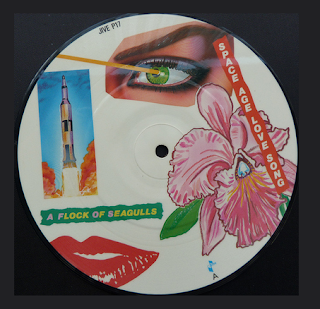The New Romantics is a musical direction that emerged in the UK in the early 1980s and (as part of a new wave) that had a significant impact on the development of the English pop and rock scene. “New Romantics” emerged as an alternative to punk culture that was ascetic in many of its manifestations and not only didn’t carry social protest, but also (according to Virgin Encyclopedia of 80’s Music) “sang glamor, bright styles and hedonism”.
The rise of the movement coincided with the early flowering of the music video culture. The latter served as a catalyst for the process, since it was precisely in the calculation of the video clips that “new romantics” created incredible hairstyles (A Flock of Seagulls) and fancy robes (Spandau Ballet), actively using bright cosmetics.
The first wave of the “new romanticism” of the early 80s (the most prominent representatives of which were Visage, Spandau Ballet, Culture Club, Ultravox) quickly disappeared, but later resurrected several times.
The first organizer of the new romantics movement in Britain was Stevo (Stephen Pierce): it was he who released an early compilation on the label Some Bizzare Records, where Classix Nouveaux, Blancmange, Depeche Mode and Soft Cell were first introduced.
In the US, the first to notice the new British trend is Jim Fouratt from the New York club Danceteri. He became the organizer of the so-called "The Second British invasion", which began with a visit to Spandau Ballet in New York in 1981. Soon, the movement spread to Los Angeles, where Henry Peck and Joseph
Brooks opened the club The Veil, which existed from 1981 to 1983.
to be continued
The rise of the movement coincided with the early flowering of the music video culture. The latter served as a catalyst for the process, since it was precisely in the calculation of the video clips that “new romantics” created incredible hairstyles (A Flock of Seagulls) and fancy robes (Spandau Ballet), actively using bright cosmetics.
The first wave of the “new romanticism” of the early 80s (the most prominent representatives of which were Visage, Spandau Ballet, Culture Club, Ultravox) quickly disappeared, but later resurrected several times.
History
The two early centers of neo-romanticism were the Billy’s club on Dean Street, where themed glam discos and concerts devoted to the works of David Bowie and Roxy Music and the Blitz Club on Great Queen Street were held regularly. Hell later opened: Steve Strange (who worked as a bouncer) and Rusty Egan (DJ) performed here, soon forming Visage along with Billy Curry and Midge Yura (Ultravox members). The club was also frequented by Boy George (to whom Strange was forbidden to appear at the club after he was caught stealing). The club soon had dozens of doubles, the most notable of which were Croc’s in Essex and The Regency in Chedwell Heath, where Depeche Mode and Culture Club gave their first concerts.The first organizer of the new romantics movement in Britain was Stevo (Stephen Pierce): it was he who released an early compilation on the label Some Bizzare Records, where Classix Nouveaux, Blancmange, Depeche Mode and Soft Cell were first introduced.
In the US, the first to notice the new British trend is Jim Fouratt from the New York club Danceteri. He became the organizer of the so-called "The Second British invasion", which began with a visit to Spandau Ballet in New York in 1981. Soon, the movement spread to Los Angeles, where Henry Peck and Joseph
Brooks opened the club The Veil, which existed from 1981 to 1983.
Image
The main stylistic model for the "new romantics" was David Bowie, whose single "Fashion" (1980) became for some time the programmatic anthem of the new movement. At the same time, the images of the representatives of the “new romanticism” were usually caricature: they were dominated by androgyny, grotesque aristocracy, imagery associated with science fiction (hence the first version of the term: futuristic).to be continued


No comments:
Post a Comment